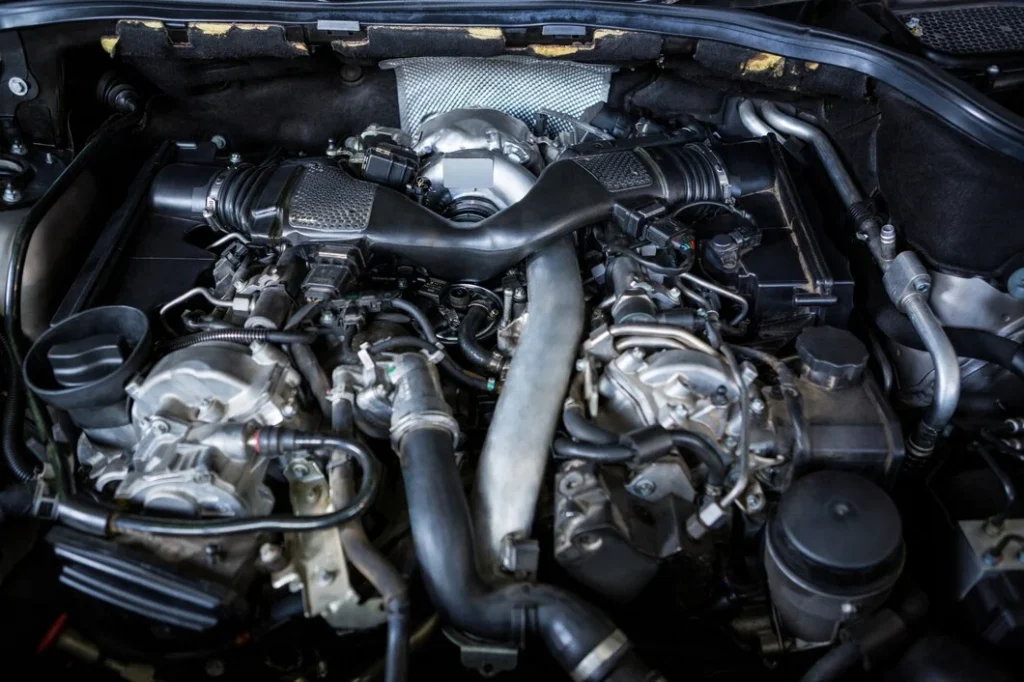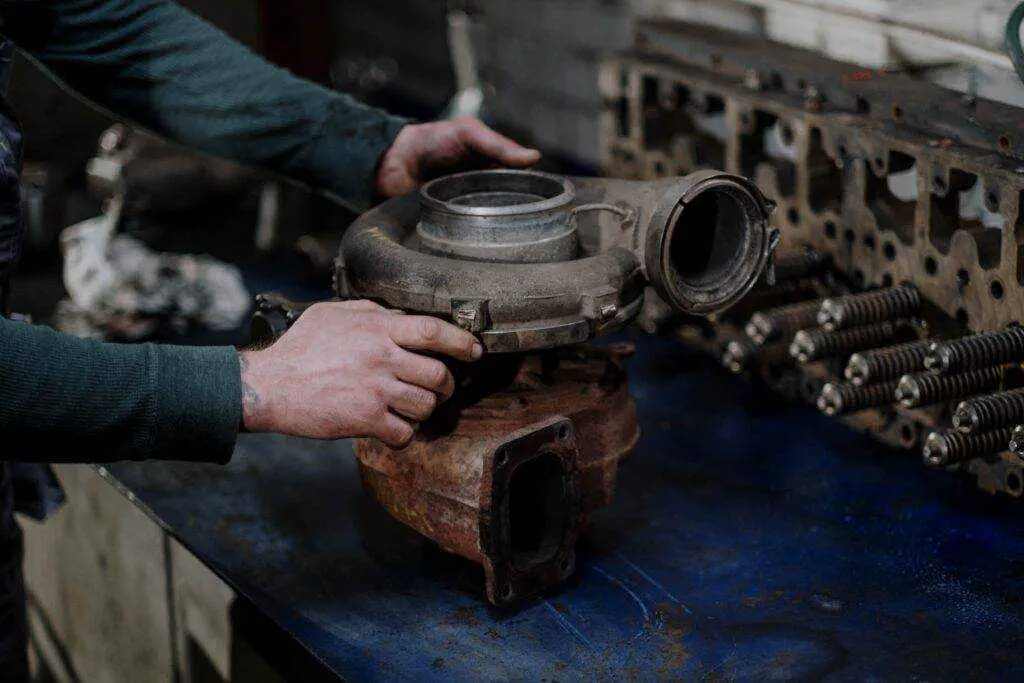Having to frequently add oil to your engine can be worrying and frustrating. While some oil consumption is normal, excessive oil loss likely points to an underlying issue.
There are several common reasons why does my car run out of oil so fast:
Worn Engine Components Allowing Oil to Leak Internally
Why Does My Car Run Out of Oil So Fast? As engines accumulate mileage, internal components like piston rings and cylinder walls can become worn. This allows oil to leak past into the combustion chamber, where it is burned off during engine operation.
Signs of worn internal components include:
- Blueish exhaust smoke, indicating oil is being burned
- Low oil level between changes, with no visible leaks
- Oil consumption of more than 1 quart per 1,000 miles in newer vehicles
- Increased oil use in high-mileage vehicles
Replacing worn piston rings and rebuilding cylinder walls can fix this issue. Engines with very high miles may need more extensive repairs.

External Oil Leaks
Your engine has many seals and gaskets meant to contain oil. If these deteriorate, external leaks can develop. Common leak points include:
- Valve covers
- Oil pan
- Rear main seal
- Oil pump
- Timing chain cover
Why Does My Car Run Out of Oil So Fast? Watch for oil spots on the ground where you park. Leaks may also be visible as oil accumulates on engine components. Replacing worn seals and gaskets will address external leaks.
Failing PCV Valve
The positive crankcase ventilation (PCV) system removes gases from the crankcase and routes them back into the intake to be burned. If the PCV valve fails, pressure can force oil past seals and gaskets.
Symptoms of a bad PCV valve include:
- Oil consumption with no visible leaks
- Oil blow-by from the crankcase breather
- Oil leaks from multiple locations
Replacing the PCV valve and cleaning the system will commonly fix this.
Using the Wrong Weight Oil
Always use the oil weight specified for your vehicle. Thinner oils may not adequately coat components, while thicker oils can cause high oil pressure. This can lead to accelerated wear and oil burning.
Refer to your owner’s manual if unsure of the correct viscosity. Improving to a higher quality oil may also help reduce consumption.
Overfilling the Oil
Why Does My Car Run Out of Oil So Fast? Adding too much oil can potentially cause leaks and oil burning. Always carefully check the dipstick and do not overfill above the “full” mark. Excess oil has nowhere to go inside the engine, forcing its way past seals and into combustion chambers.
Failing Head Gasket
A leaking head gasket will result in oil and coolant mixing. This will contaminate both fluids and may be noticeable as a “milky” appearance. Oil can then enter coolant passages and escape or burn unevenly.
Replacing a failing head gasket is crucial to prevent further damage. It is a more involved repair best left to a professional mechanic.
Driving Habits
Aggressive driving, frequent short trips, and lack of routine maintenance can all accelerate wear. Give your engine a fully warmed-up operation and follow the manufacturer’s maintenance schedule. This will maximize engine life and minimize oil consumption.
Choosing the Right Oil
Quality oil meeting vehicle specifications will give your engine the best protection. Conventional oils are fine for most driving, but consider synthetic blends or full synthetics on high-mileage vehicles. The right oil helps minimize wear over time.
How Can I Stop My Engine From Burning Oil?
Excess oil consumption creates unnecessary expenses and accelerates engine wear. Why Does My Car Run Out of Oil So Fast? Try these tips to stop oil burning:
Use Recommended Oil Weight
Always use the manufacturer’s recommended oil viscosity. Lower weights may not adequately coat internals while thicker oils can cause high pressure.
Upgrade to Synthetic Oil
Quality synthetic oils provide superior protection, especially in high-mileage engines. The improved seal of synthetics can reduce oil burning.
Replace Worn Seals and Gaskets
Inspect seals like valve cover and rear main seals for leaks. Replace any worn seals to prevent oil loss. Use high-quality parts to prevent early failures.
Replace PCV Valve
A clogged PCV system can pressurize the crankcase, forcing oil past seals into cylinders. A new PCV valve restores proper ventilation.
Replace Worn Rings and Pistons
If you have very high mileage, worn piston rings, and cylinders may need replacement to stop burning oil. This is an involved repair best done by a pro.
Adjust Driving Style
Aggressive acceleration and lugging the engine excessively can increase consumption. Gentler driving helps reduce oil loss in some cases.
Check for Overfilling
Make sure not to overfill the crankcase with oil. This can lead to leaks past seals and increased oil burning.
Eliminating excessive oil consumption saves money and prevents further damage. Seek repairs promptly if oil use remains high.
What Are Symptoms of Low Oil in a Car?
Why Does My Car Run Out of Oil So Fast? Letting oil get too low between changes is detrimental to engine health. Watch for these warning signs of low oil:
- Low Oil Pressure Warning Light – Indicates oil level is dangerously low
- Knocking Sound from Engine – Camshaft and valvetrain noise from lack of lubrication
- Check Engine Light – Multiple issues can trigger the check engine light when the oil level is low
- High Engine Temperature – Oil cools and lubricates, so low levels may lead to overheating
- Rattling Noise at Startup – Signifies wear of internal components from oil starvation
- Smoke From Exhaust – Can be caused by oil burning due to excessively worn parts
- Oil Leaks – Low oil levels may reveal leaks more readily by emptying the system
- Increased Oil Consumption – Worn engine parts can increase oil loss between changes
- Difficulty Starting – Especially when the engine is hot, signaling low oil pressure
Do not ignore these warning signs. Always promptly check the dipstick level and top up the oil if needed. Repair any leaks or oil consumption issues to prevent serious engine damage.
FAQs – Why Does My Car Run Out of Oil So Fast?
Why is my car losing oil but no leak?
The most common cause of oil loss without leaks is worn internal engine components like piston rings or cylinder walls. Gaps allow oil to pass into the combustion chambers where it burns off, reducing the oil level. Other possible causes include a faulty PCV system or a failed head gasket.
Why does my car have low oil life so fast?
Frequent short trips, aggressive driving, high mileage, old oil filters, and sensor issues can all cause the oil life gauge to drop quickly. Harsh conditions accelerate oil breakdown while problems can provide faulty readings.
What causes a car to consume more oil?
Excess oil consumption is typically due to worn piston rings, cylinder walls, valve seals, and guides. Oil leaks past these compromised internal seals and gets burned in the engine. Overfilling oil, using the wrong viscosity, and PCV issues can also increase oil use.
How can I stop my engine from burning oil?
Use the manufacturer’s recommended oil viscosity, upgrade to synthetic, replace worn gaskets and seals, change the PCV valve, replace worn piston rings, adjust driving style, and avoid overfilling oil. These steps reduce oil loss in engines prone to burning oil.
Why do I have to add oil to my car every week?
Frequent oil additions are a sign of an underlying problem. Potential causes include worn piston rings, a failing PCV system forcing oil past seals, external leaks from a damaged gasket, incorrect oil viscosity, overfilled oil, and aggressive driving habits.
What are the symptoms of low oil in a car?
Warning signs of low oil include oil pressure and check engine lights, engine knocking, overheating, oil leaks, rattling startup, exhaust smoke, increased oil use between changes, and difficulty starting. Address any symptoms immediately by checking the level and adding oil as needed.





